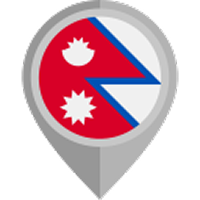Nepal vision | 30/12/2024
In the lap of the surrounding world's highest peak and other towering Himalayan ranges lies the beautiful country of Nepal. Call mountain climbers and adventurers worldwide to explore the alluring scenic views and appealing artifacts of the majestic charm of peaks.
The rich mountaineering heritage gained international attention after Sir Edmund Hillary and Tenzing Norgay Sherpa successfully reached Everest's summit in 1953, collectively inspiring countless adventurers to explore the majestic peaks of Nepal.
Whether beginner or experienced mountain climbers, there is something for everyone trying to find the thrill and adventure. Understanding that, we have brought everything required for you to have a safe and fantastic mountain climbing in Nepal.
Overview of Mountain Climbing in Nepal
Mountaineering in Nepal is a renowned experience with breathtaking challenges and stunning landscapes. The fact that Nepal is home to the world's highest peak further enhances your experience.
Based on this, different mountain climbing experiences are suitable for you. Either it's a technical aspect of high peaks or more accessible trekking peaks for beginners. Many climbing expeditions target summits between 5000m and 6500m, a chance to witness the awe-inspiring Himalayas up close.
Despite being home to various peaks and ranges, climbing all of them is impossible.
How many types of mountain climbing in Nepal are there?
With plenty of peak expeditions in Nepal, you should understand your skill level to decide the best way to get the experience. According to the Nepal Mountaineering Association, there are three types of peak climbing in Nepal, with notable peaks in each category.
Trekking Peaks
The entry-level climb for beginners is the trekking peak, perfect for experienced trekkers and new climbers. These peaks are less technical to climb. But you need basic skills in handling ice axes and crampons as the trail passes through the icy glaciers, uneven terrain, and rugged landscapes.
Key Facts:
- Number of Peaks: 27 trekking peaks officially classified by the Nepal Mountaineering Association (NMA).
- Difficulty Level: Low to moderate; suitable for beginners and intermediate climbers.
- Permit Requirements: Managed by the NMA; climbing permits are mandatory.
Notable Peaks
Mera Peak (6,476m)
Mera Peak is one of the highest trekking peaks in Nepal. Despite the height, it has a non-technical climb winding through rhododendron forests, glaciers, and high-altitude terrain. As you make your journey through the Khmubu region, get your enriching experience surrounded by the panoramic views of Everest, Lhotse, Makalu, and Cho Oyu, which are perfect for beginners eager to experience high-altitude climbing.
Island Peak (6,189m)
The other name of Island Peak is Imja Tse. It is the popular trekking peak accessible nearest to Everest to get the experience of moderate technical climbing and immerse in the alluring beauty of Everest Base Camp, cheered by the Nuptse, Lhotse, Cho Oyu, and Ama Dablam.

Chulu East (6,584m) & Chulu West (6,419m)
Located in the Annapurna region, Chulu East is more challenging due to its steeper ascent. Yet the rewards of the fantastic views of the Annapurna and Manaslu range. These peaks are great for experienced trekkers looking for a more demanding climb.
Tent Peak (5,663m)
Also known as Tharpu Chuli, Tent Peak is a quieter option for climbers who want less crowded routes. It follows the Annapurna Base Camp trek and is an excellent choice for beginners wanting a peaceful and accessible climb.
Expedition Peaks
Now come a bit challenging peaks called expedition bekas, which typically exceed 7000m. These climbs require advanced technical skills, excellent physical fitness, and experience in high-altitude conditions.
Key Facts:
- Difficulty Level: High; suitable for seasoned climbers.
- Permit Requirements: Managed by the Department of Tourism, climbing permits are extensive and specific.
- Common Challenges: Harsh weather, steep ascents, and technical routes.
Notable Expedition Peaks
Annapurna I (8,091m)
Annapurna I is one of the toughest peaks to climb, as it has a high fatality rate and extreme technical challenges. You must navigate avalanches, icefalls, and steep rock faces, suitable only for elite mountaineers with advanced experience.
Lhotse (8,516m)
As the fourth highest mountain in the world, Lhotse is climbed after acclimatizing on Everest. Coming with the steep faces and unpredictable weather, sharing the same route as Everest up to Camp 3.
Makalu (8,485m)
Makalu is famous for its pyramid-like shape and technical difficulty. You must tackle steep ascents and mixed terrain involving ice and rock, perfect for those with advanced climbing skills and technical expertise.

Technical Climbs
Among the strenuous climbs are the technical ones. The mountains have complex terrain like ice walls, rock faces, and steep ridges. These peaks demand advanced climbing skills, specialized equipment, and strong navigation abilities.
Key Facts:
- Difficulty Level: High; requires technical expertise.
- Gear Needed: Ice axes, crampons, ropes, harnesses, and other climbing equipment.
- Training: Proficiency in expedition-style climbing and problem-solving in extreme environments.
Notable Technical Climbs
Huin Chuli (6,441m)
Huin Chuli is a technically demanding peak with no standard route, so it needs excellent navigation skills and expedition experience. You must tackle steep terrain and face unpredictable weather. These trails are for advanced climbers looking for a unique and challenging ascent.
Machermo Peak (6,273m)
Located in the Mahalangur region, Machermo Peak is known for its steep north face, which stands as a test of the technical abilities of climbers. After the challenge, you get rewarded for the scenic views of Cho Oyu, Everest, and other Himalayan giants. This peak is perfect for experienced mountaineers who want steep and satisfying climbs.
Everest (8,849m)
Everest is the tallest mountain in the world and the ultimate challenge for climbers. Staindg at the world's highest point and challenge of the extreme altitude, harsh weather, and technical sections like the Khumbu Icefall and Hillary Step, the climb requires expert skills and careful planning. Your hard work pays off with a sense of accomplishment, unparalleled views, and a life-changing experience. Still, it only suits highly experienced climbers with extensive high-altitude training.
How many mountains in Nepal are open to climbing?
As of 2024, Nepal has 461 mountains open for climbing, including 57 peaks recently added to provide more climbing options. These new peaks range between 5000 and 6500m, ideal for both beginner and experienced climbers. These additions aim to encourage exploration of less known routes and reduce crowds on popular mountains like Everest, Annapurna, and many more.
Although 461 mountains are currently open, Nepal has more than 2000 climbable peaks. The government has planned to gradually open more of this mountain to promote tourism and boost the local economy.
What Should Climbers Know Before Planning Their First Climbing Trip to Nepal?
For any climber who wants to experience the marvelous peaks, planning, and careful consideration are required. So, we have pinned out all the things climbers should know before embarking on their adventure.
Permits and Legal Requirements
First comes the permit to climb the mountain in Nepal. You must get it through the Department of Tourism through a registered trekking agency. You need a passport valid for at least six months and a Nepal visa to get the permit. There are two main permits: Climbing permits for peaks above 5800m, and Trekking permits for lower-altitude treks.
Best Seasons for Climbing
The best time for climbing is required to get the ideal experience of the adventure. The autumn and spring are the best seasons due to the comfortable weather, good trail conditions, and clear visibility of the peaks.
While the monsoon season and winter are not advisable to start on the adventure. The season brings unpredictable weather, harsh climate conditions and invitations to the risk of natural disasters like landslides, avalanches, and flash floods.
Essential Gear and Equipment
The second on the list comes the gear. The gear is your partner for an efficient and safe adventure. Some of the key items are
Category | Items |
| 1. Travel Documents | - Passport - Climbing Permits |
| 2. Clothing | - Thermal Layers (tops and bottoms) - Trekking Pants - Down Pants - T-shirts (short and long sleeve) - Insulated Jacket - Waterproof Jacket and Pants |
| 3. Footwear | - High Altitude Boots (for 6,000m+ peaks) - Hiking Boots (waterproof) - Snow Gaiters - Lightweight Shoes (for camp) |
| 4. Climbing Equipment | - Helmet - Ice Axe - Crampons - Harness - Carabiners (lock and non-lock) - Ropes (dynamic and static) |
| 5. Safety Gear | - First Aid Kit - Avalanche Transceiver - Headlamp (with extra batteries) |
| 6. Personal Gear | - Gloves (fleece and mountaineering) - Hat and Beanie - Sunglasses (UV protection) |
| 7. Camping Gear | - Tent - Sleeping Bag (for cold temperatures) - Sleeping Mat |
| 8. Navigation Tools | - Map and Compass - GPS Device |
| 9. Food and Hydration | - Water Bottles and Filter - Energy Snacks |
| 10. Miscellaneous | - Tool Kit - Toiletries |
Physical and Mental Preparation
Mountain climbing in Nepal comes with drastic physical challenges and mental resilience. Before attempting a climb, you should prepare physically and mentally:
Physical Training
You should start training six to a year earlier for good physical fitness. For daily, you can go for walks and take the staircase, then include cardio and strength training in your workout routine. These will be enough for your body to improve endurance and stamina.
Besides, flexibility exercises will help climbers prevent injuries, particularly on difficult terrains.

Mental Resilience
The mental challenge is yet another important aspect of physical preparation. You should have a positive mindset and try to be comfortable in any unpredictable conflict. It will be better if you are prepared to face discomfort, exhaustion, and unexpected weather. Maintaining focus and a positive attitude during challenging moments is key to a successful climb.
To wrap up, mountain climbing in Nepal is an unmatched experience for adventurers in the heart of the most strenuous climb in the world. While it is a once-in-a-lifetime adventure, you have to research it thoroughly and prepare accordingly for a safe and successful climb. If you are ready to embark on your peak expedition journey in Nepal, feel free to reach out to the experts of Nepal Vision Trek for a memorable and rewarding climbing adventure.
FAQS









